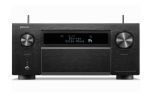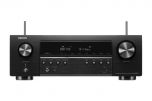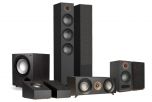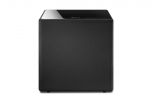How to Start Your First Home Theater System
How to Start Your First Home Theater System
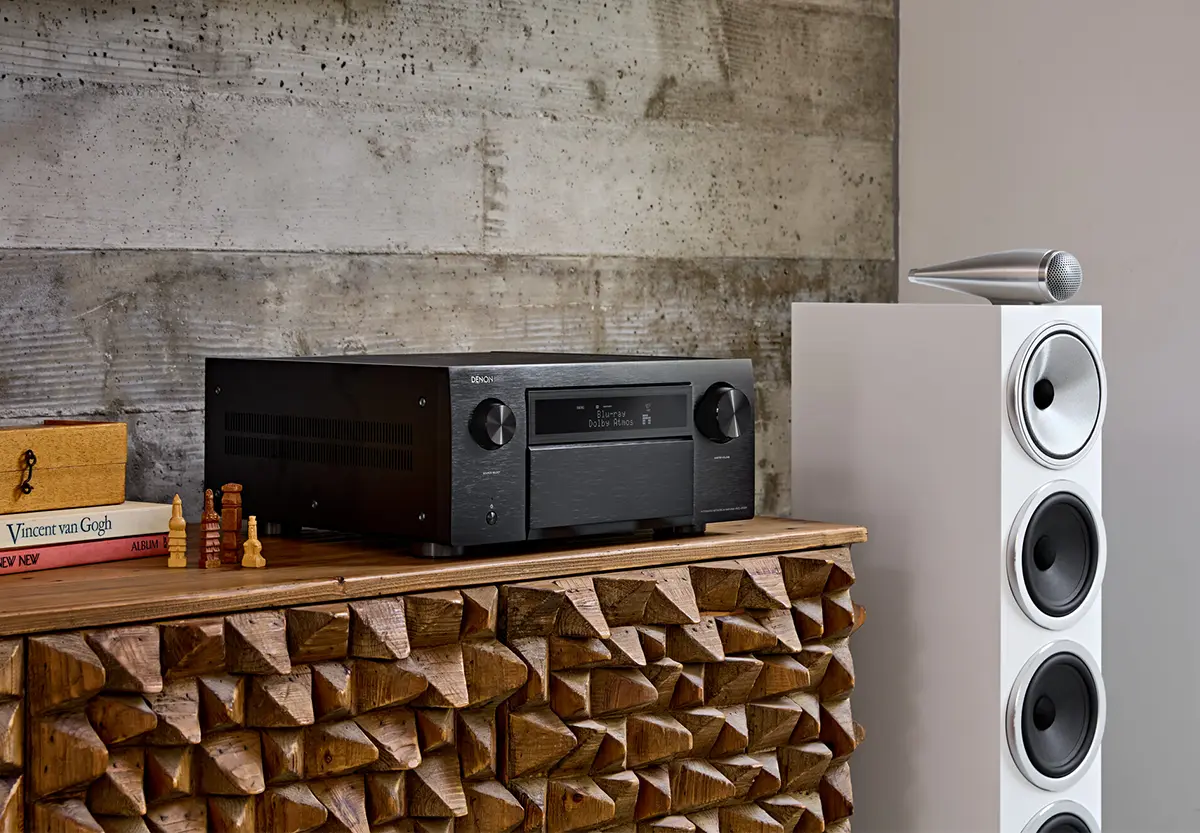
Do I need a receiver for my home theatre?
You've decided to build a home theatre, but you might not know where to begin. This is a common scenario, and a question we frequently receive. To help you out, we've created this guide, starting with the core of your system: the AV receiver.
An AV receiver (AVR) functions as the central hub of your home theatre, managing your various components, speakers, and music sources. Unlike soundbars or simpler systems, AV receivers handle multiple inputs and outputs, giving you more flexibility and control.
Key Considerations for Choosing the Right AV Receiver
1. Audio and Video Compatibility
Modern AV receivers often upscale both audio and video, enhancing your TV experience. Whether you need 4K or 8K resolution or want immersive 3D audio, an AVR can improve your home theatre. Look for features like HEOS® Built-in if you're considering multi-room audio or wireless speaker setups.
2. Power Output and Performance
Great sound relies on both your speakers and AV receiver. If you’re aiming for a high-performance system, consider models like the Denon AVR-A1H, which offers up to 150 watts per channel over 15 channels. For a first-time home theatre, however, a 90-watt receiver with 5.1 channels should suffice, providing clarity and room for future expansion without overwhelming your setup.
3. Connectivity and Future-Proofing
Your AV receiver should fit seamlessly into your life. Denon receivers with HEOS® Built-in enable wireless streaming across multiple rooms. Consider how many HDMI inputs and outputs you’ll need for future devices, so your system can grow with your needs.
4. Room Calibration and Audio Processing
Room acoustics affect sound quality, but technology like Audyssey and Dirac Live—standard in many Denon AVRs—can automatically calibrate audio to optimize the sound for your space. These features help ensure your setup sounds great, even in less-than-ideal rooms.
5. User Interface and Ease of Use
A user-friendly interface makes setting up and operating your AV receiver easier. Denon’s AVR-S670H and AVR-S770H models are known for intuitive menus, simple calibration tools, and convenient connectivity options. They also support multi-room streaming, wireless connections, and the latest video technologies like 8K.
Choosing the Right Speaker Configuration
Stereo vs. Surround Sound
For immersive sound, surround sound is the way to go. A 5.1-channel system with a Denon receiver will deliver that enveloping audio experience, perfect for movies, music, and shows. If you're not ready for surround sound yet, a basic stereo setup is still a good starting point.
Speaker Placement
For optimal audio performance, position your speakers equidistant from your seating area. Avoid placing them too close to walls or your ears, as this can distort sound quality.
Understanding Speaker Channels
2.0 or 2.1: Stereo setup with left and right speakers (2.0) and an optional subwoofer (2.1).
5.1: Adds a center and rear speakers for true surround sound.
7.1 and beyond: Introduces more rear speakers and upward-firing speakers for enhanced audio depth.
Building Your Home Theater System
1. Choosing Speakers: Passive vs. Powered
Passive speakers require an external amplifier or AV receiver, while powered speakers have built-in amplification. Passive setups offer more flexibility for audiophiles who want to mix and match components.
2. Selecting the Right AV Receiver
Denon offers AV receivers for a range of budgets. A future-proof model like the AVR-S670H can start with stereo sound and expand to a 5.1 surround system as your needs grow. For more ambitious projects, Denon’s X-Series or AVR-A1H models deliver high-end performance.
3. Proper Setup and Calibration
New AV receivers, like those from Denon, include setup assistants that visually guide you through the installation. Colour-coded speaker terminals and auto-setup tools like Audyssey room correction make configuring your system straightforward and intuitive.
Enhancing Your Home Theater Experience
Adding Subwoofers and Extra Speakers
For a richer audio experience, consider adding more speakers and subwoofers. Ensure your receiver has enough channels and outputs to accommodate your home theatre dreams.
Incorporating Streaming Devices and Media Players
Your AV receiver should have plenty of HDMI inputs to integrate streaming devices or media players. Many models, such as those with HEOS® Built-in, allow wireless streaming throughout your home.
Exploring Advanced Audio Technologies
For the best sound, look for AV receivers that support Dolby Atmos and DTS. These 3D audio technologies provide an immersive experience that standard surround sound setups can’t match.
Conclusion
Starting a home theater can feel overwhelming, but investing in a high-quality AV receiver will make the process smoother and more enjoyable. Ensure your system is flexible, future-proof, and tailored to your current needs. With a bit of patience and planning, you can build a home theater setup that provides incredible entertainment for years to come.
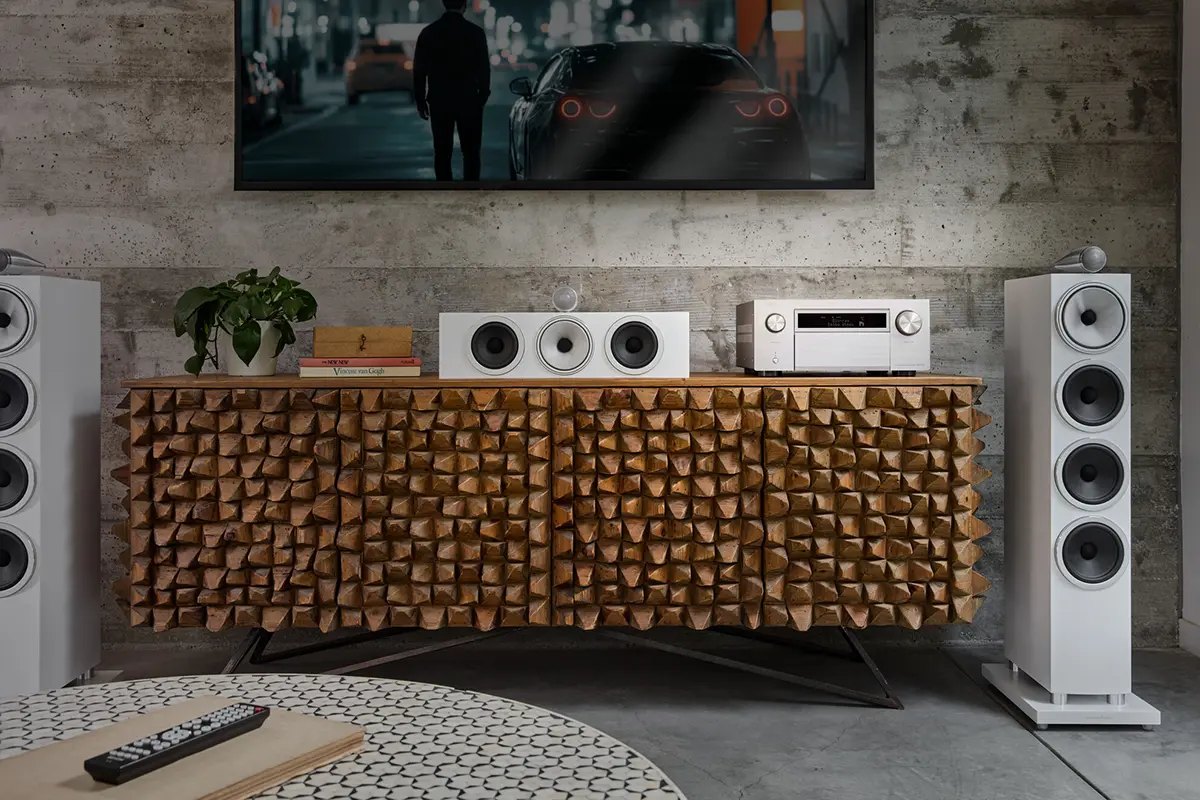

Choosing the Right Speaker Configuration
Stereo vs. Surround Sound
For immersive sound, surround sound is the way to go. A 5.1-channel system with a Denon receiver will deliver that enveloping audio experience, perfect for movies, music, and shows. If you're not ready for surround sound yet, a basic stereo setup is still a good starting point.
Speaker Placement
For optimal audio performance, position your speakers equidistant from your seating area. Avoid placing them too close to walls or your ears, as this can distort sound quality.
Understanding Speaker Channels
2.0 or 2.1: Stereo setup with left and right speakers (2.0) and an optional subwoofer (2.1).
5.1: Adds a center and rear speakers for true surround sound.
7.1 and beyond: Introduces more rear speakers and upward-firing speakers for enhanced audio depth.
Building Your Home Theater System
1. Choosing Speakers: Passive vs. Powered
Passive speakers require an external amplifier or AV receiver, while powered speakers have built-in amplification. Passive setups offer more flexibility for audiophiles who want to mix and match components.
2. Selecting the Right AV Receiver
Denon offers AV receivers for a range of budgets. A future-proof model like the AVR-S670H can start with stereo sound and expand to a 5.1 surround system as your needs grow. For more ambitious projects, Denon’s X-Series or AVR-A1H models deliver high-end performance.
3. Proper Setup and Calibration
New AV receivers, like those from Denon, include setup assistants that visually guide you through the installation. Colour-coded speaker terminals and auto-setup tools like Audyssey room correction make configuring your system straightforward and intuitive.
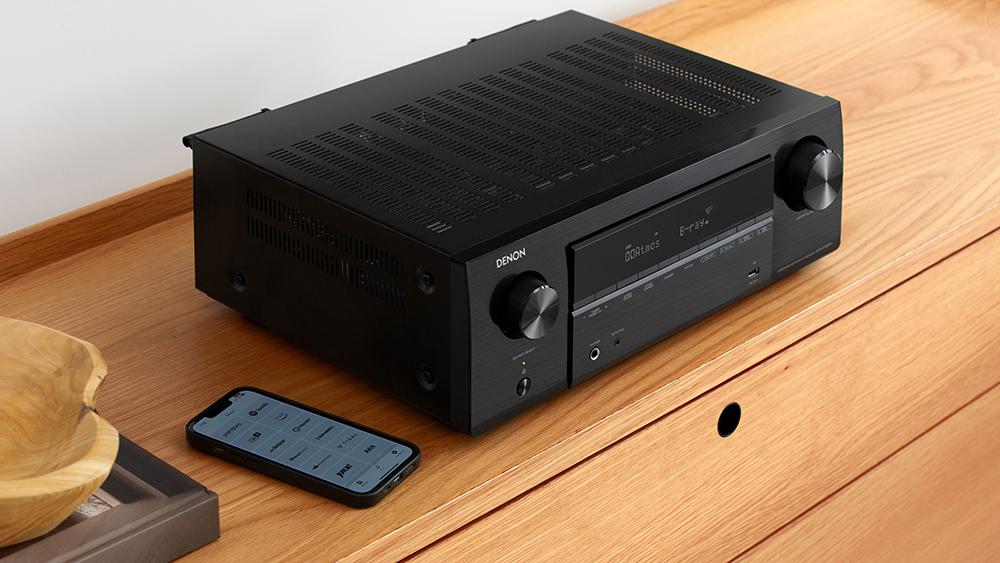

Enhancing Your Home Theater Experience
Adding Subwoofers and Extra Speakers
For a richer audio experience, consider adding more speakers and subwoofers. Ensure your receiver has enough channels and outputs to accommodate your home theatre dreams.
Incorporating Streaming Devices and Media Players
Your AV receiver should have plenty of HDMI inputs to integrate streaming devices or media players. Many models, such as those with HEOS® Built-in, allow wireless streaming throughout your home.
Exploring Advanced Audio Technologies
For the best sound, look for AV receivers that support Dolby Atmos and DTS. These 3D audio technologies provide an immersive experience that standard surround sound setups can’t match.
Conclusion
Starting a home theater can feel overwhelming, but investing in a high-quality AV receiver will make the process smoother and more enjoyable. Ensure your system is flexible, future-proof, and tailored to your current needs. With a bit of patience and planning, you can build a home theater setup that provides incredible entertainment for years to come.

